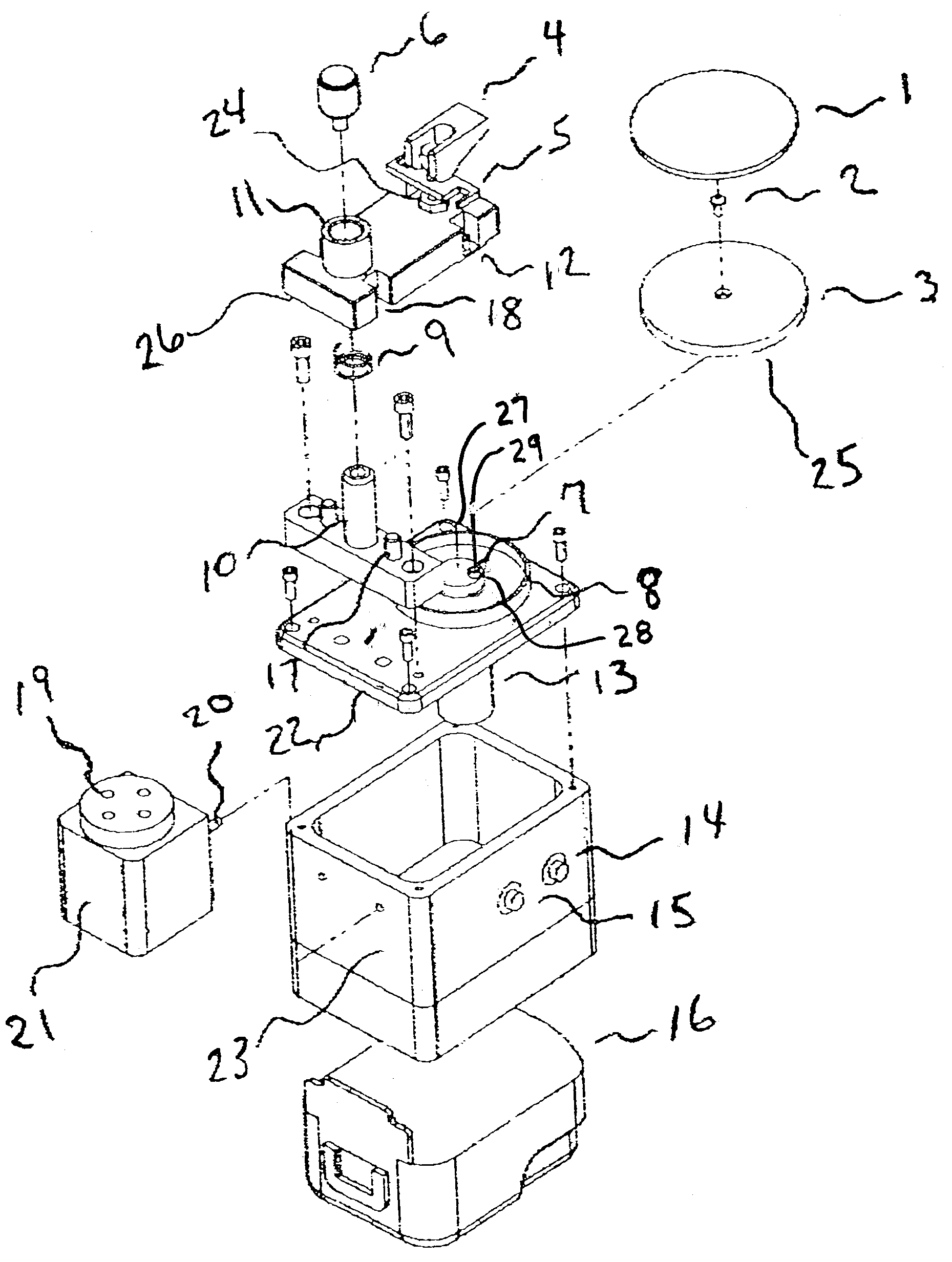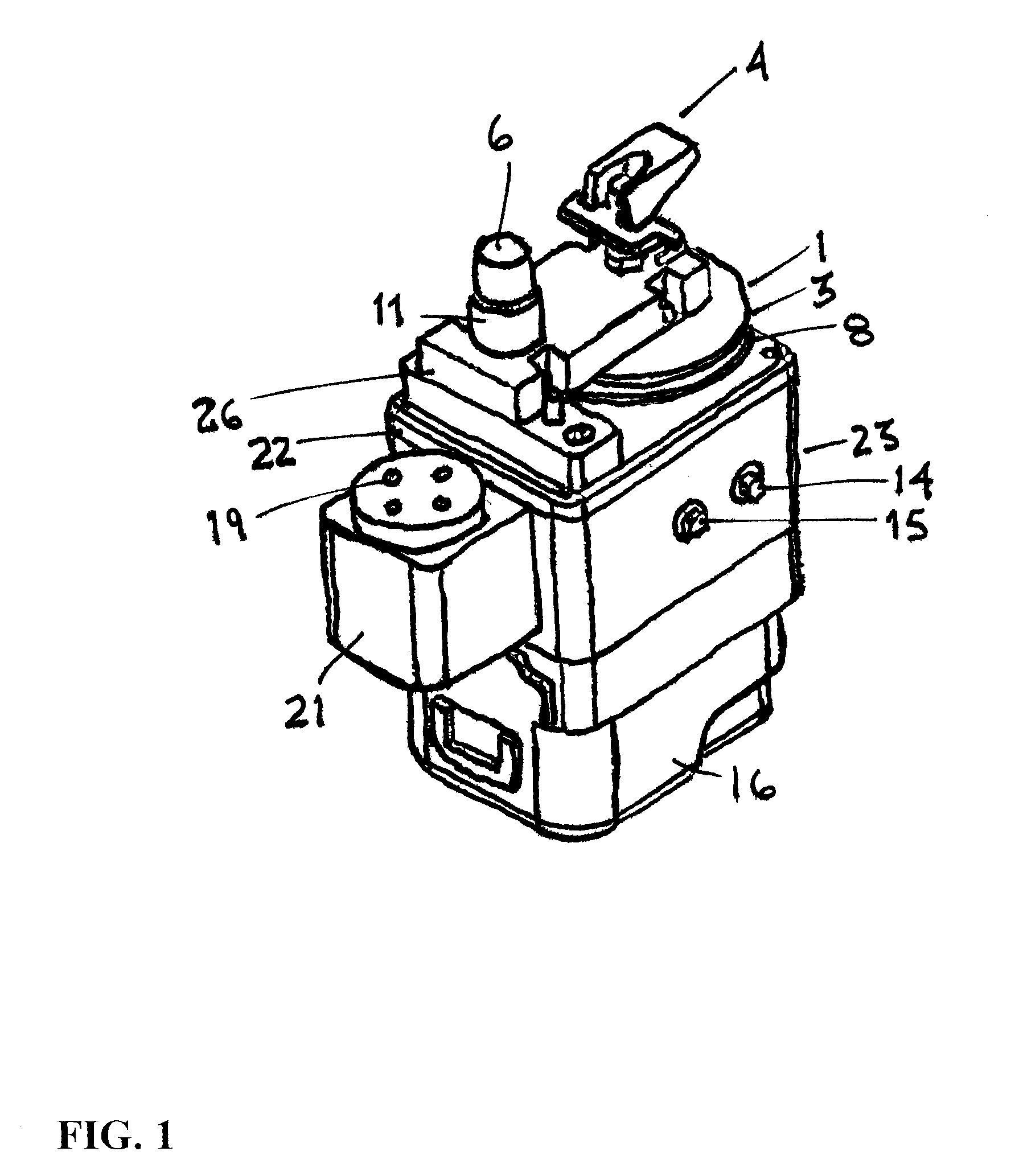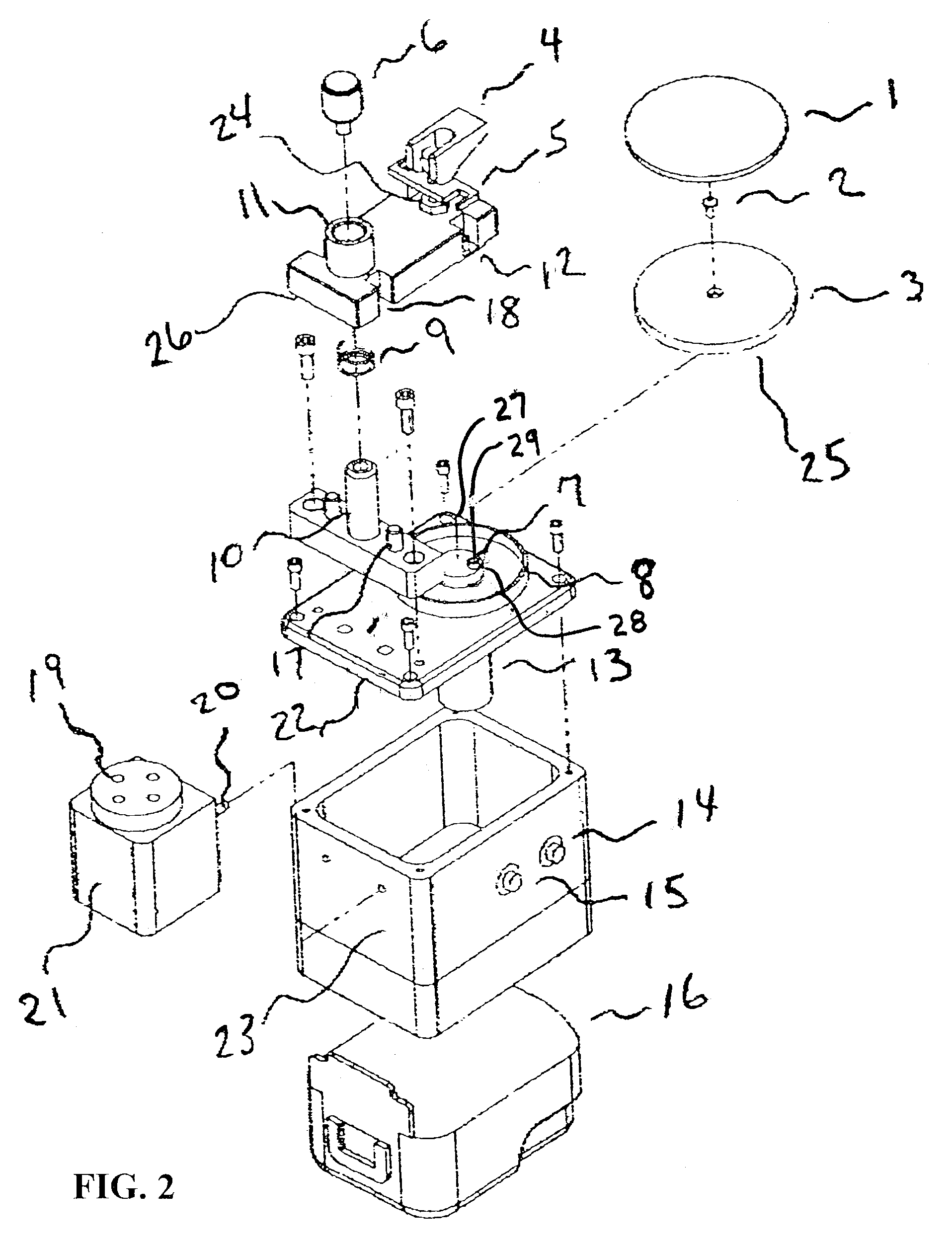Portable optical fiber polisher
a polisher and optical fiber technology, applied in the field of polishers, can solve the problems of inefficiency of the orbital pattern of the polisher, wear of the polishing surface of the orbital polisher, and the need to replace the polishing disk, so as to simplify the polishing process and reduce the time. , the effect of less steps
- Summary
- Abstract
- Description
- Claims
- Application Information
AI Technical Summary
Benefits of technology
Problems solved by technology
Method used
Image
Examples
Embodiment Construction
[0024]Some examples of the invention will now be described using the drawings. While the examples are necessary to meet the written description, best mode and enablement requirements of the laws and rules for patent applications, these examples should not be considered as limiting the claims. Instead, the claims should be limited only by the language of the claims, themselves, as issued, as they would be interpreted by a person familiar with the field.
[0025]Now referring to FIGS. 1 to 3, a holding assembly 26 is mounted to the base of the polisher 23, which is capable of holding an optical fiber end using holder 4. The holding assembly 26 is capable of adjusting pressure between the fiber end and a polishing surface 1. A connector may be inserted into the connector ferrule holder 12 of the holding assembly 26 for polishing. A biasing mechanism, such as a spring 9, may be used to prevent contact between the fiber end and the polishing surface 1, until button 6 is pressed. The pressur...
PUM
| Property | Measurement | Unit |
|---|---|---|
| pressure | aaaaa | aaaaa |
| distance | aaaaa | aaaaa |
| rate of rotation | aaaaa | aaaaa |
Abstract
Description
Claims
Application Information
 Login to View More
Login to View More - R&D
- Intellectual Property
- Life Sciences
- Materials
- Tech Scout
- Unparalleled Data Quality
- Higher Quality Content
- 60% Fewer Hallucinations
Browse by: Latest US Patents, China's latest patents, Technical Efficacy Thesaurus, Application Domain, Technology Topic, Popular Technical Reports.
© 2025 PatSnap. All rights reserved.Legal|Privacy policy|Modern Slavery Act Transparency Statement|Sitemap|About US| Contact US: help@patsnap.com



